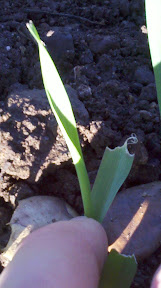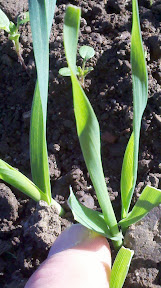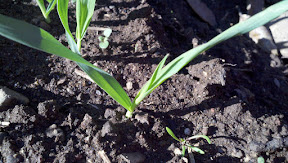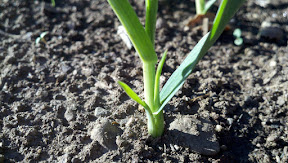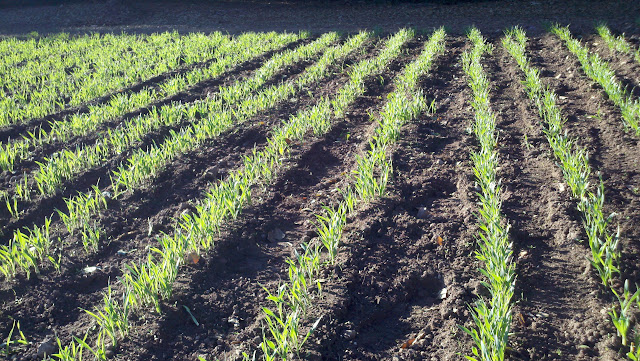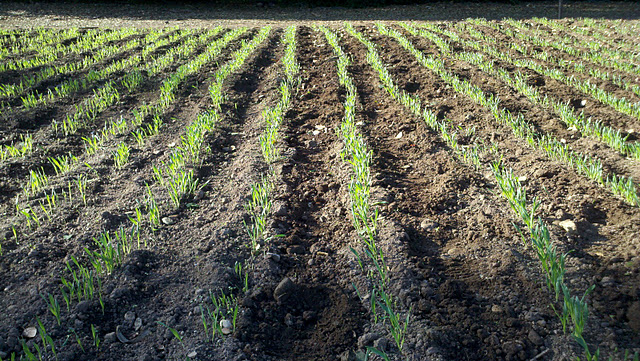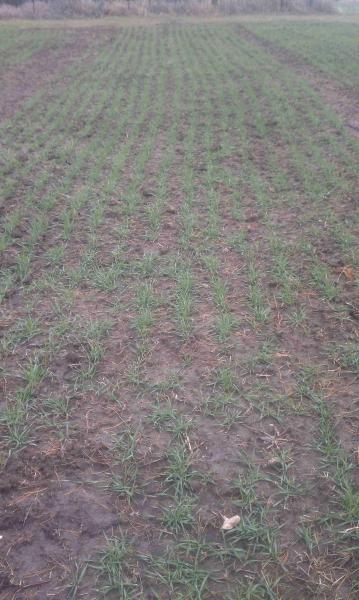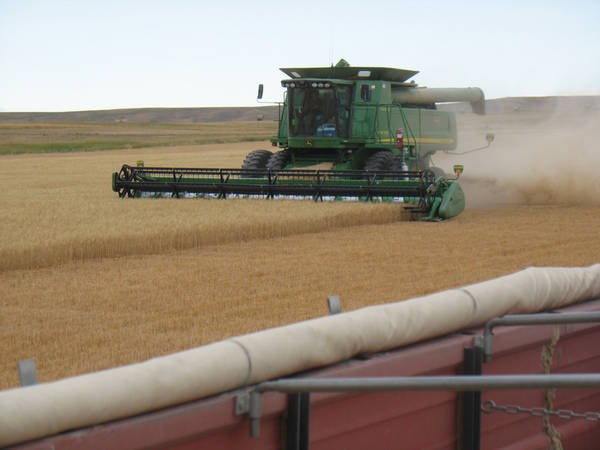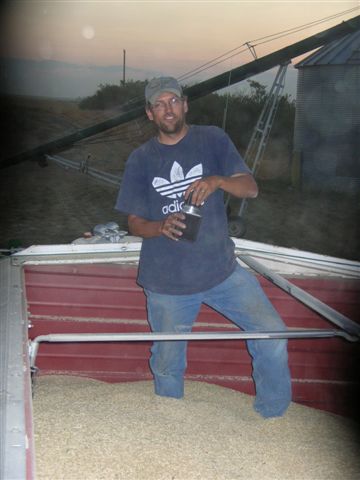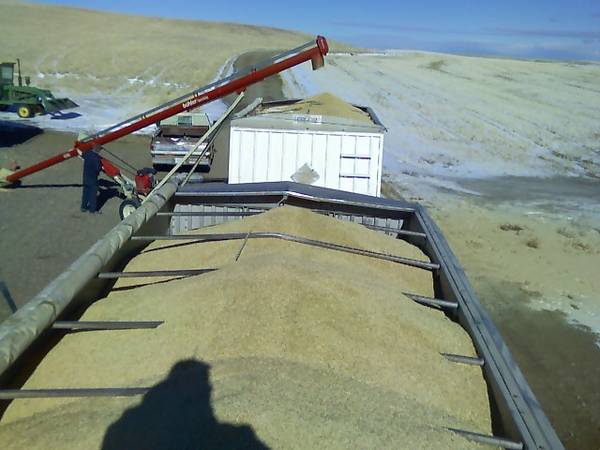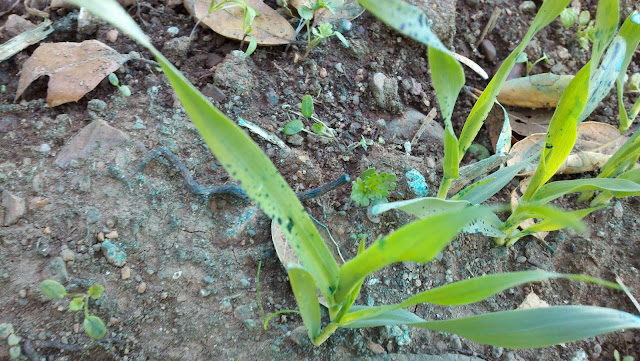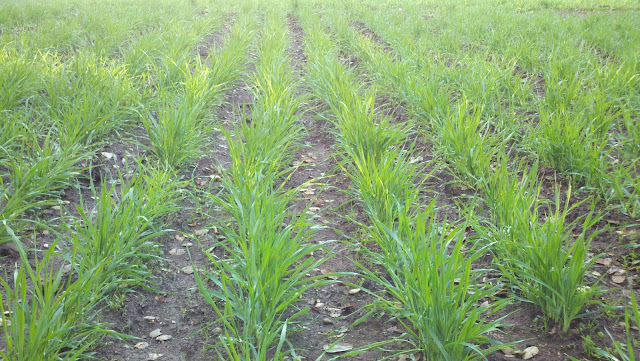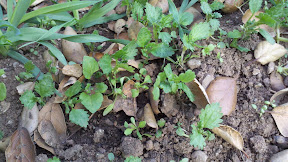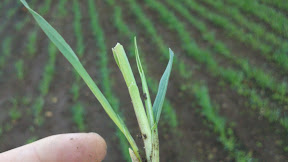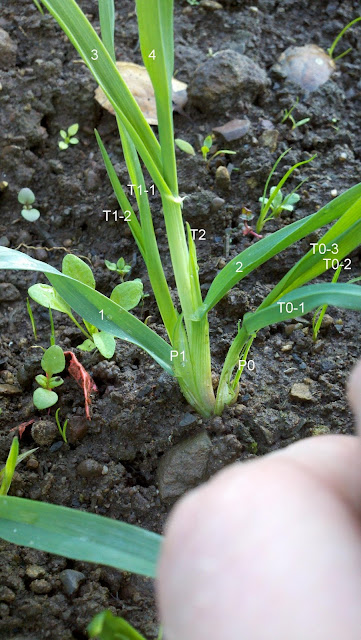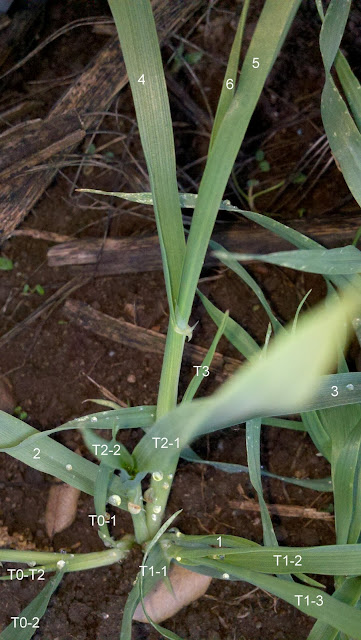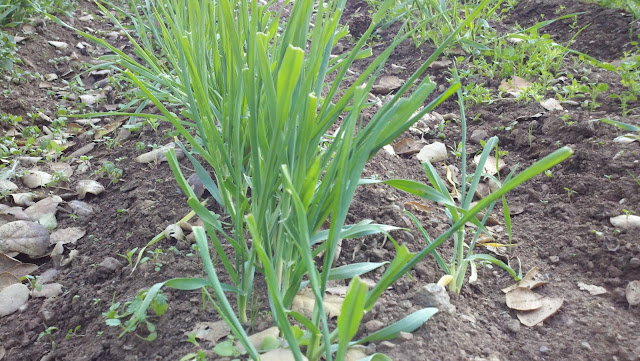I don't think the predation is happening any more. Every plant I see that has been chomped has damage to the first and second leaves, but the second leaf is always longer.
In normal plant growth, the first leaf grows quickly, then slows down as the second leaf grows. So either the predators always eat the first leaf down further (unlikely), or all this chomping happened in the past.
If the predation were still occuring, I would expect to see some plants with both leaves eaten down to the same extent, and I don't. That's good news!
I still don't know what caused it, so I'll leave the netting up for now.
Most of the Conlon in the middle plot, which was seeded at 2x density and is in partial shade, is at the 2-3 leaf stage:
But in the lower plot, which has 1 x Conlon density and far more sunshine, some plants are farther along,
like this guy that has three leaves, a coleoptillar tiller, a leaf-1 tiller, and what may be the prophyll of a leaf-2 tiller.
Overall, the plants are taller than they were last week
but growth seems to be happening slowly. It is December after all, so you can expect growth to be slow. But how do you know if growth is slow because of the temps, or if there's another, more fixable cause?
There is a heuristic that farmers use to evaluate and predict the growth of crops called Growth Degree Days. GDD is just the time-integral of temperature, and not surprisingly, it has units of Degree*Day. It's usually expressed in Fahrenheit in the States, and it's calculated by taking the average of the high and low temperatures for a day, subtracting a baseline temp (usually 5.5C or 40F for barley), then summing up the adjusted mean for each day in a period.
For example, the GDD for barley yesterday in Palo Alto was (60F + 42F)/2 - 40F = 11, and for the past two days the GDD was 11 + (55F + 32F)/2 - 40 = 14.5
In practice, just use
this calculator to make things easy.
All other things being equal, GDD is roughly proportional to the developmental progress of plants. So you can compare the progress of plants grown in different climates and at different times of year by checking how far along they are with respect to their GDD. If they're behind where they should be, this helps you identify water, disease, or nutrient stress.
I can compare my progress to
Merit, another malting barley variety. Merit had 2 leaves at 177 GDD since emergence, and 3 leaves plus tillers at 277.5 GDD. I'm not really sure when my plants emerged since it happened over the Thanksgiving weekend, so I'll say it was Dec 1, the first day I saw them above ground. Then, I've had 168 GDD since emergence.
It has taken me 3 weeks for the slower Conlon plants in the middle plot to match the progress that Merit made in 9 days, but my GDD (168) is about the same as Merit's GDD (177) at the 2 leaf stage. The Conlon in the sunnier lower plot and the bere seem to be closer to the stage Merit achieved after 277 GDD.
So even though the plants are growing slowly, they're well on track given the cold temperatures we've had. At least it isn't frosting hard at night!




































![Craft A Brew - Safale BE-256 Yeast - Fermentis - Belgian Ale Dry Yeast - For Belgian & Strong Ales - Ingredients for Home Brewing - Beer Making Supplies - [3 Pack]](https://m.media-amazon.com/images/I/51bcKEwQmWL._SL500_.jpg)























